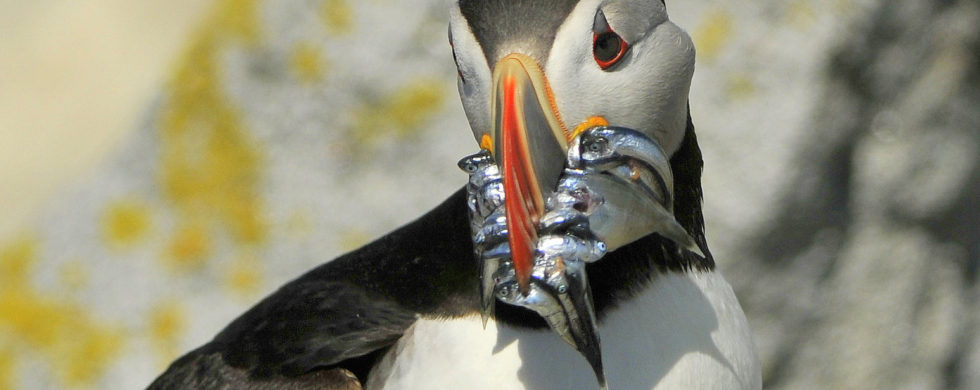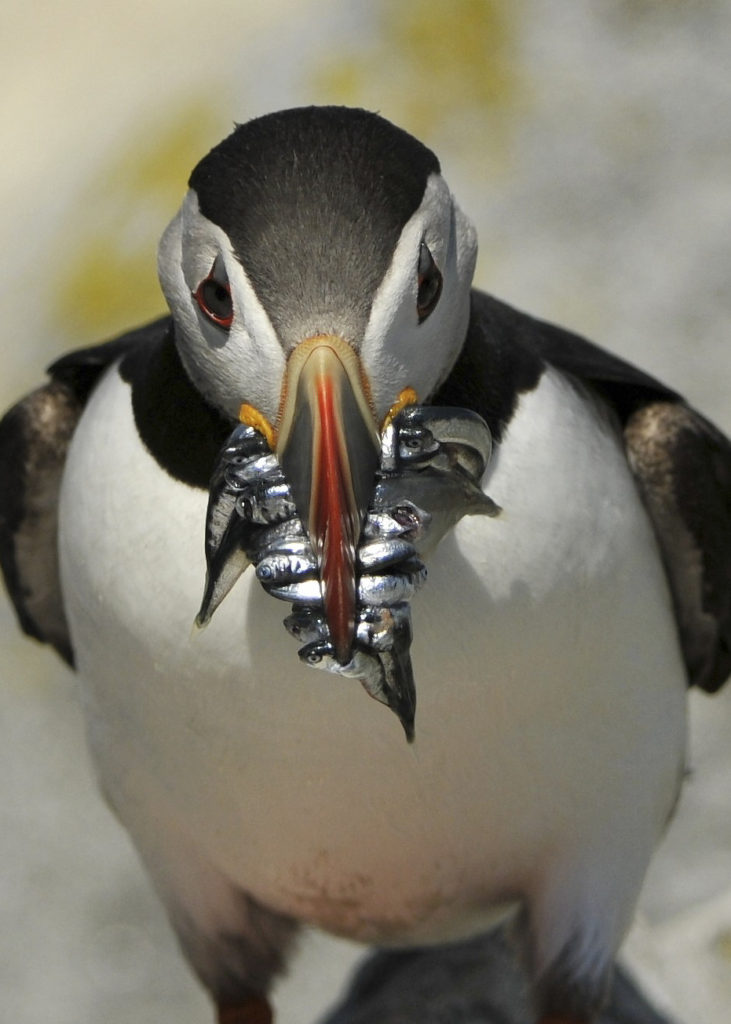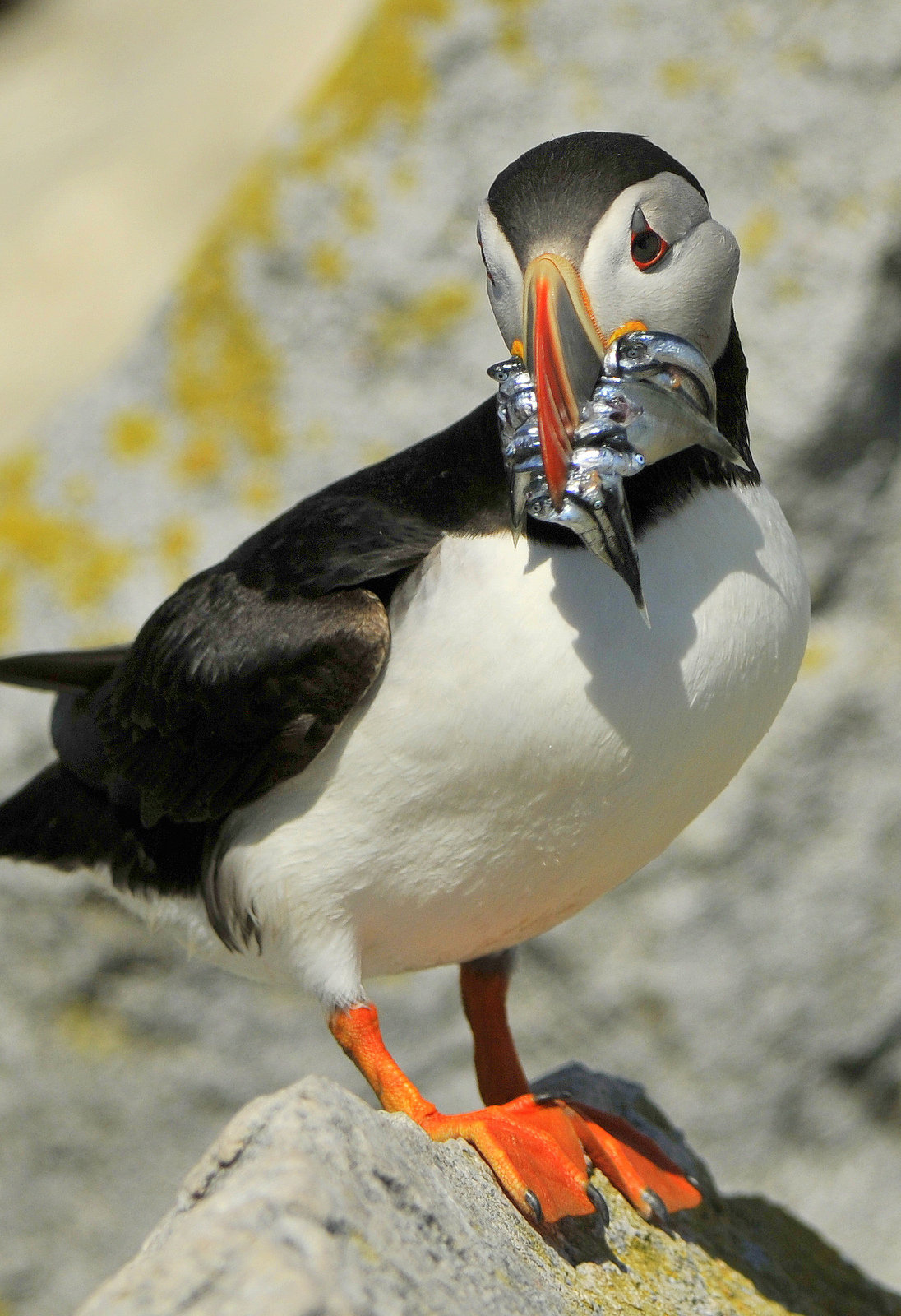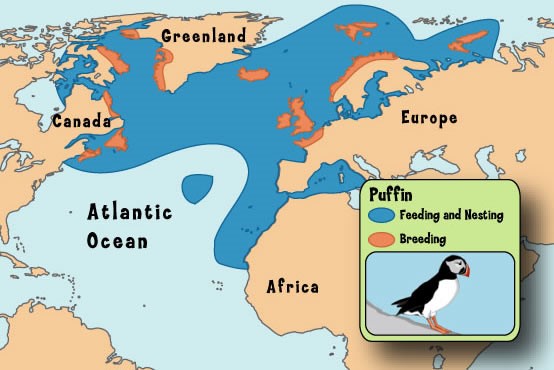
31
2021Gob Mob
Shot of the Month – March 2021
This month we visit with a small black and white bird that thrives in cold climates. From the image above you might guess that it is a type of penguin who has a flair for color and panache. Actually this lovely chap is an Atlantic Puffin (AP) and despite the similarities, he is not related to the penguin. APs are part of the Alcidae family of seabirds and they can fly (unlike penguins).
The AP is about the size of a mourning dove and weighs about a pound, which is kind of heavy for a bird of that size. The puffin is an excellent swimmer and uses that weight to help him dive up to 200 feet in search of a meal.
These birds are incredibly resilient – they spent most of their lives on the open sea in the North Atlantic Ocean which is C-O-L-D. Over half of the world’s AP population live near Iceland. Others can be found near Norway, Greenland, Newfoundland, Nova Scotia, Maine, western parts of Europe and northern Russia.
When out on the open ocean the birds tend to live solitary lives. Given the vast expanse of the North Atlantic Ocean, and the small size of the bird, we actually know very little about their lives as scientists can rarely find one to study!
In late spring the AP returns to coastal areas and nearby islands to breed in large colonies. During this period those striking bills and feet become super colorful to attract potential mates. Once an AP finds a partner they stay together for life, up to 25 years for some. After eight months apart the couple reunite at the same burrow site to continue their partnership. Mother Nature is such a romantic…
The mated pair work together to raise a single chick each year and the parents take turns going out to sea to look for food. In the image above you can see an adult returning back to the burrow to feed the chick.
I point to the corner of my mouth, “Excuse me Mr. Puffin you have a little something right uh, well, you have some crumbs at the edge of…….uh, never mind.”
AP dine mainly on herring, sand eels and capelin. Puffins normally swallow their catch underwater but when catching food for their chick they use their specialized bill to carry mouthfuls back to the burrow. Atlantic Puffins have backward-pointing spines on their bills, tongues, and on the roof of their mouths. They push each newly caught fish to the back of their mouth with their tongue and the fish are kept secure by the tiny spines. This allows the puffin to keep their mouth open and keep fishing for more. A puffin can usually hold about 10 fish in his mouth though in these phots I think I count 11 or 12 fish. Nice job!
when catching food for their chick they use their specialized bill to carry mouthfuls back to the burrow. Atlantic Puffins have backward-pointing spines on their bills, tongues, and on the roof of their mouths. They push each newly caught fish to the back of their mouth with their tongue and the fish are kept secure by the tiny spines. This allows the puffin to keep their mouth open and keep fishing for more. A puffin can usually hold about 10 fish in his mouth though in these phots I think I count 11 or 12 fish. Nice job!
I photographed this hard working puffin parent on Machias Seal Island, off the coast of Maine. The “full-mouth” shot is tough to capture. Once the bird lands he is running to duck into the burrow as quickly as possible as every other puffin and gull in the neighborhood is running towards him to steal his cache.
There you have it, the Atlantic Puffin – the adorable, colorful, chipmunk-esque plucky bird of the sea.
For more on the Atlantic Puffin check out my Clown of the Sea post.
Until next month…..m
Sources:
Nikon D300S, Nikon 200-400mm (@ 200mm), f/4, 1/4000 sec, ISO 200, EV -0.5



Ana Maria Ferraz de Campos
Truly beautiful